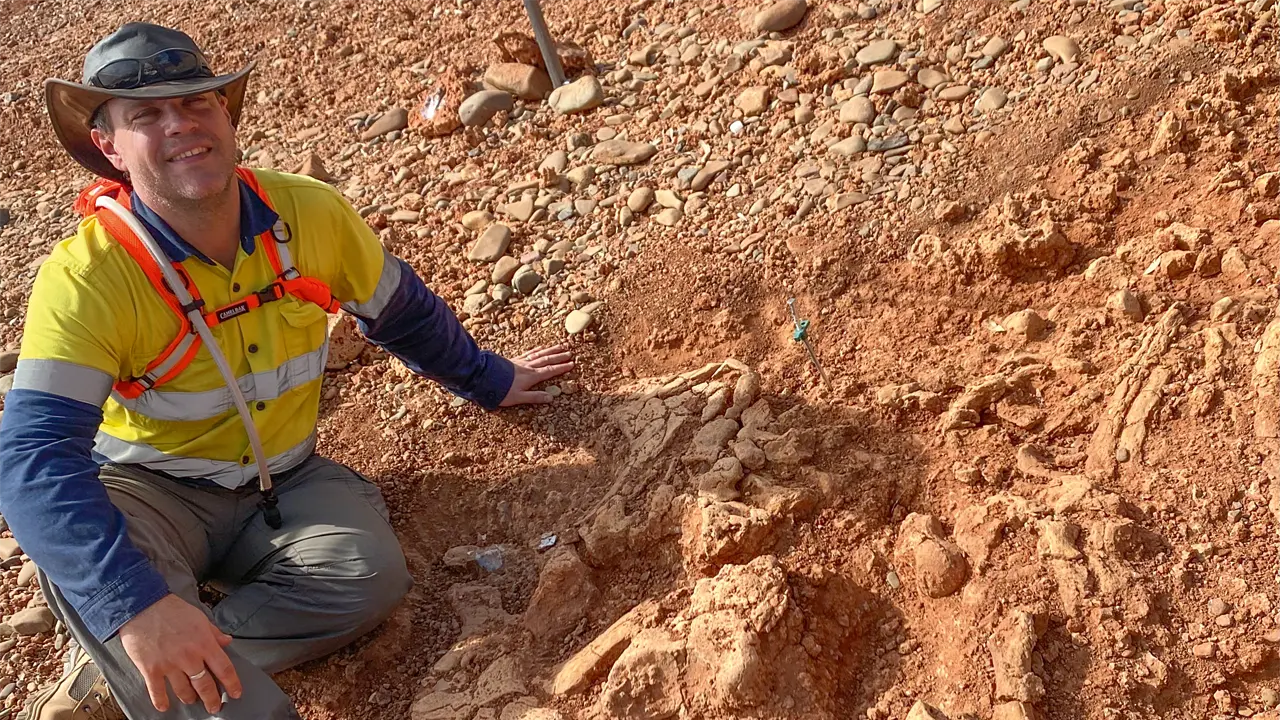In the past year, multiple skeletons of the ancient ‘giant wombat’ diprotodon have been unearthed near Karratha, WA.
Story + Photos Aleisha Orr
"That’s ridiculous. You’re not going to find anything,” diprotodon expert Gilbert Price initially told fellow palaeontologist Kenny Travouillon after he announced his idea to dig for fossils in a remote creek bed in the Pilbara. Kenny, mammalogy curator at the Western Australian Museum, wanted to visit Du Boulay Creek, 100km south-west of Karratha and about 7km from the coast, where fossils of the largest marsupial to live, diprotodon, had been found 3 decades earlier.
“Usually, if you have something exposed on the surface, with 30 plus years of erosion and storms and weathering, those bones are no longer going to be present,” Gilbert says.
And he was right. In 2022, when Kenny led a team from the museum to the site, the creek’s bank had eroded about 10m over the 30 years, and they didn’t find any of the handful of diprotodon skeletons that scientists had photographed at the site in 1991. However, while those bones were no longer there, many more skeletons of the animals had been exposed. “We found fossils pretty much straight away. We found hundreds of bones,” Kenny says.
Gilbert says he was “blown away” by what he saw when he finally visited in 2023. “When we first walked out, I just couldn’t believe it, there were bones after bone.”
This story excerpt is from Issue #157
Outback Magazine: October/November 2024










